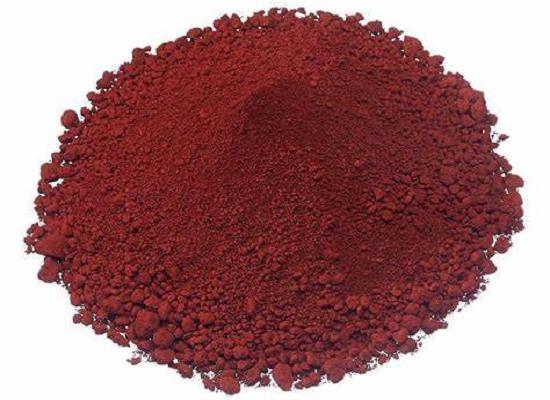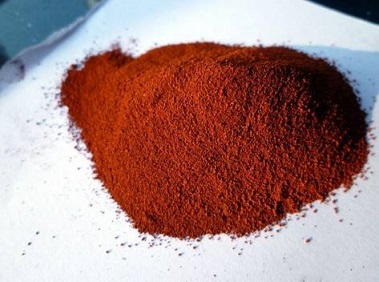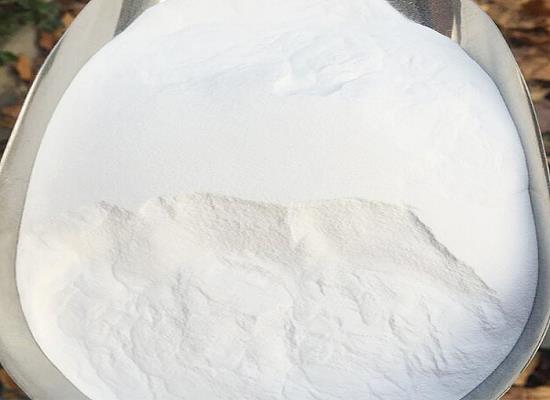Iron oxide nanoparticles in photothermal therapy
General Description
Iron oxide nanoparticles possess unique properties that make them suitable for various biomedical applications. They exhibit dual functions of magnetism and near-infrared absorption, making them ideal for photothermal therapy (PTT). Their biocompatibility, biodegradability, ease of synthesis, and proven safety enhance their potential as cancer therapeutics. By enhancing the photothermal effect, clustering Iron oxide nanoparticles and optimizing their size can improve their therapeutic efficacy. In cancer treatment, Iron oxide nanoparticles can be modified and combined with other substances to achieve targeted therapy and enhance dispersion and photothermal properties. Coating them with biomimetic membranes or polymers stabilizes them in physiological environments. Overall, Iron oxide nanoparticles show great promise for targeted cancer treatment through photothermal therapy.

Figure 1. Iron oxide
Advantages in Biomedical Applications
Iron oxide nanoparticles possess unique properties that make them suitable for various biomedical applications. They are magnetic particles capable of converting light into heat, making them ideal for photothermal transducers in photothermal therapy. Unlike other magnetic particles, Iron oxide nanoparticles exhibit dual functions of magnetism and near-infrared absorption. This combination makes them particularly attractive for PTT. Iron oxide nanoparticles offer several advantages for biomedical use. Firstly, they are biocompatible and biodegradable, ensuring minimal toxicity and reducing potential side effects. Additionally, IONs can be easily synthesized and modified to suit specific applications. They have already been approved for human use as contrast agents in magnetic resonance imaging (MRI). The versatile properties of Iron oxide nanoparticles enable their application in various cancer therapeutics. They can be used for targeted drug delivery, magnetic hyperthermia (using an external magnetic field to generate heat and destroy cancer cells), photodynamic therapy (where light activates photosensitizers to kill cancer cells), and photothermal ablation (using heat to destroy tumors). In summary, the unique characteristics of Iron oxide nanoparticles, including their biocompatibility, biodegradability, ease of synthesis, tunability, and proven safety, make them promising candidates for cancer treatment and other biomedical applications. 1
Photothermal therapy
Enhancing the photothermal effect
Photothermal therapy is a promising application of Iron oxide nanoparticles in the field of biomedicine. Iron oxide nanoparticles possess the unique ability to generate heat under near-infrared laser irradiation, making them ideal for hyperthermia treatment. However, it has been found that individual Iron oxide nanoparticles require high-density light irradiation for effective tumor ablation, which exceeds safe limits for surrounding tissues. A study compared the photothermal effect of clustered Iron oxide nanoparticles with individual Iron oxide nanoparticles and observed a significant increase in NIR absorption in the aggregated nanoparticles. Clustered Iron oxide nanoparticles were more efficient in inducing temperature increase and cytotoxic effects on human lung adenocarcinoma cells. In an animal study, mice injected with clustered Iron oxide nanoparticles showed a statistically significant reduction in tumor volume after NIR irradiation. In another study, monodisperse Iron oxide nanoparticles of various sizes were synthesized, and it was found that larger Iron oxide nanoparticles exhibited higher photothermal conversion efficiency and accumulation at the tumor site. In vivo studies showed that Iron oxide nanoparticles of 310 nm size generated the highest increase in tumor temperature and demonstrated superior anticancer efficacy. Overall, the aggregation state of Iron oxide nanoparticles and their size play crucial roles in enhancing the photothermal effect and therapeutic efficacy of PTT. These findings suggest the potential of Iron oxide nanoparticles as a promising hyperthermia agent for cancer treatment. 2
Cancer treatment
Photothermal therapy is a promising strategy for cancer treatment, and iron oxide nanoparticles have shown great potential in this field. One approach is to prepare positively charged Iron oxide nanoparticles that can electrostatically bind to cancer cells with negative charges on their surface. When these Iron oxide nanoparticles are irradiated with an 808 nm laser, photothermal effects are induced, leading to the destruction of cancer cells. In addition, Iron oxide nanoparticles can be complexed with other substances to enhance their efficacy. For example, they can be coated with mesoporous silica or combined with graphene to improve dispersion and photothermal properties. Furthermore, the surface of Iron oxide nanoparticles can be modified with ligands such as tannic acid, hyaluronic acid, or human serum albumin (HSA) to achieve targeted therapy. These modifications enable the Iron oxide nanoparticles to selectively bind to cancer cells, enhancing the photothermic effect while minimizing damage to healthy cells. To overcome challenges in vivo, Iron oxide nanoparticles are often coated with polymers like carboxymethyl chitosan or poly(acrylic acid) to stabilize them in physiological environments. Another approach involves coating Iron oxide nanoparticles with red blood cell (RBC) membranes or platelet membranes, which serve as biomimetic coatings to improve their circulation time and reduce clearance from the bloodstream. Electroporation is a commonly used method for synthesizing RBC-membrane-coated Iron oxide nanoparticles. Overall, the use of Iron oxide nanoparticles in photothermal therapy holds great promise for targeted cancer treatment, and ongoing research continues to explore new strategies for improving their therapeutic efficacy and safety. 3
Reference
1. Revia RA, Zhang M. Magnetite nanoparticles for cancer diagnosis, treatment, and treatment monitoring: recent advances. Mater Today (Kidlington). 2016 Apr;19(3):157-168.
2. Estelrich J, Busquets MA. Iron Oxide Nanoparticles in Photothermal Therapy. Molecules. 2018 Jun 28;23(7):1567.
3. Chung S, Revia RA, Zhang M. Iron oxide nanoparticles for immune cell labeling and cancer immunotherapy. Nanoscale Horiz. 2021 Sep 1;6(9):696-717.
Related articles And Qustion
Lastest Price from Iron oxide manufacturers

US $1.00/g2025-06-02
- CAS:
- 1332-37-2
- Min. Order:
- 1g
- Purity:
- 0.99
- Supply Ability:
- 20 tons

US $25.00/ASSAYS2025-04-21
- CAS:
- 1332-37-2
- Min. Order:
- 100ASSAYS
- Purity:
- 99.5%
- Supply Ability:
- 100 mt




